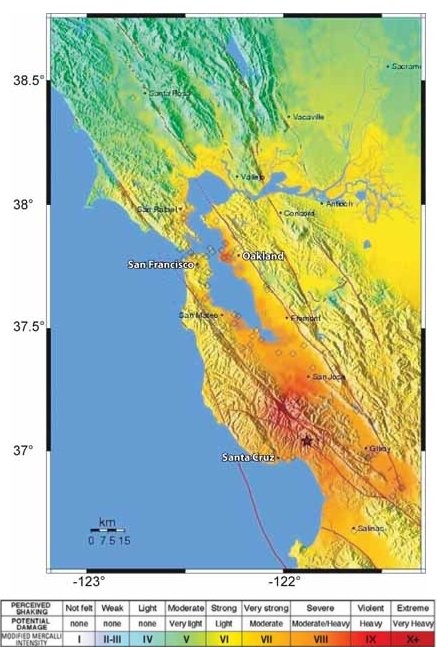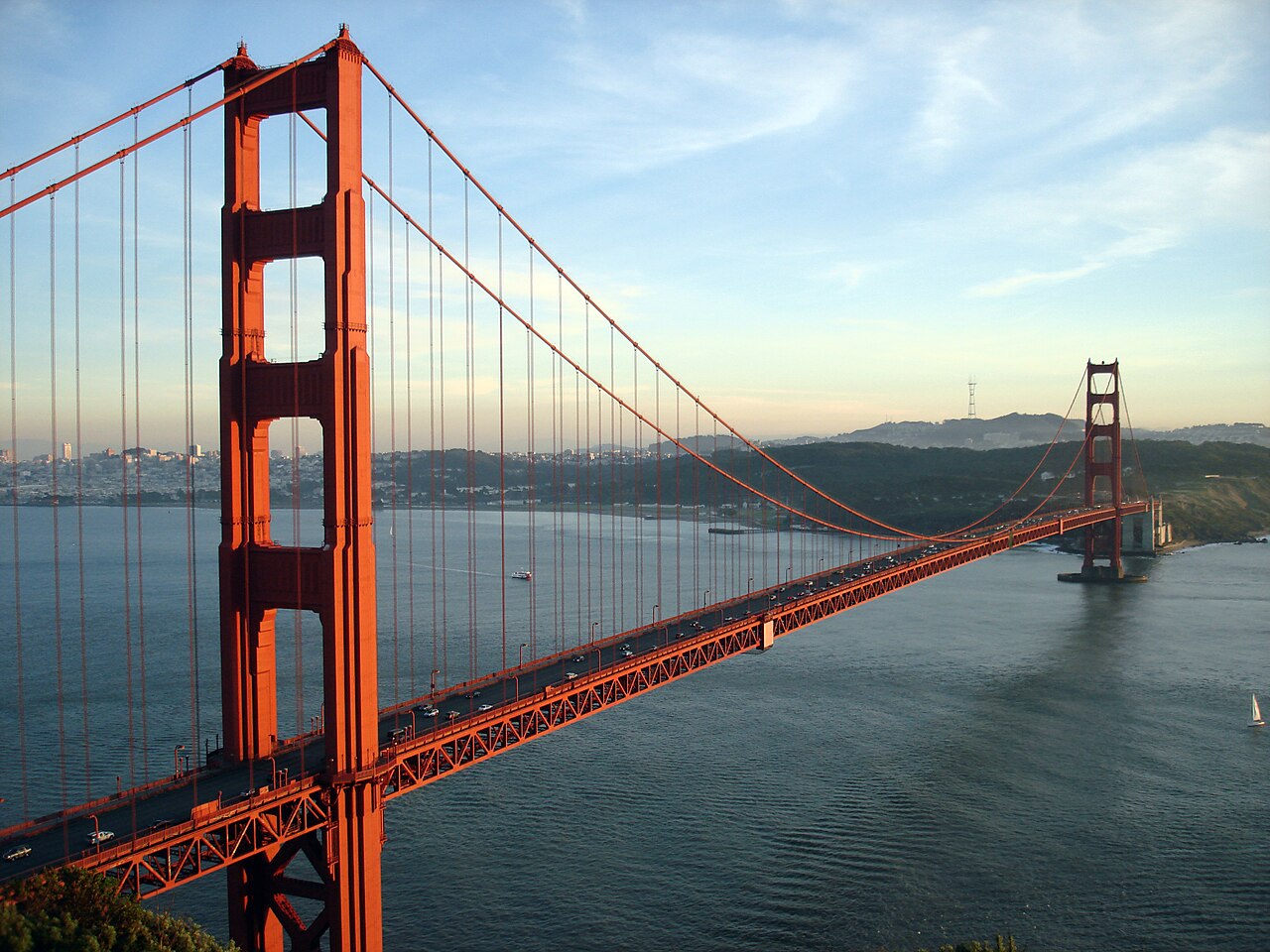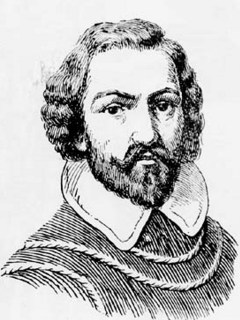sexta-feira, outubro 17, 2025
O sismo de Loma Prieta foi há trinta e seis anos...
Postado por
Fernando Martins
às
00:36
0
bocas
![]()
Marcadores: Califórnia, falha de Santo André, Loma Prieta, São Francisco, sismo, sismologia, USA
terça-feira, maio 27, 2025
A icónica ponte Golden Gate foi inaugurada há 88 anos
A Golden Gate Bridge (em português: Ponte do Portão Dourado) é uma ponte localizada no estado da Califórnia, nos Estados Unidos, que liga a cidade de São Francisco até Sausalito, na região metropolitana de São Francisco, sobre o estreito de Golden Gate. A ponte é o principal cartão postal da cidade, uma das mais conhecidas construções dos Estados Unidos, e é considerada uma das Sete maravilhas do Mundo Moderno pela Sociedade Americana de Engenheiros Civis.
A ponte é descrita no guia de viagem de Frommer como "possivelmente a ponte mais bonita e certamente a mais fotografada do mundo". Na época de sua inauguração, que foi em 27 de maio de 1937, era a ponte suspensa mais longa e mais alta do mundo, títulos que manteve até 1964 e 1998, respetivamente. Oseu vão principal é de 4.200 pés (1.280 m) e a sua altura total é de 746 pés (227 m). A ponte também é palco de mais de 1.500 suicídios.
Postado por
Fernando Martins
às
08:08
0
bocas
![]()
Marcadores: Califórnia, Ponte Golden Gate, S. Francisco, USA
sexta-feira, maio 23, 2025
O infame Massacre de Isla Vista foi 11 anos...
Rodger stabbed three men to death in his apartment, apparently one by one on their arrival. About three hours later, he drove to a sorority house and, after failing to get inside, shot three women outside, two of whom died. He next drove past a nearby deli and shot a male student inside to death. He then began to drive through Isla Vista, shooting and wounding several pedestrians from his car and striking several others with his car. He exchanged gunfire with police twice, and he was injured in the hip. After his car crashed into a parked vehicle, he was found dead inside with a self-inflicted gunshot wound to the head.
Before driving to the sorority house, Rodger uploaded a video to YouTube titled "Elliot Rodger's Retribution", in which he outlined his planned attack and his motives. He explained that he wanted to punish women for rejecting him, and sexually active men because he envied them. He also emailed a lengthy autobiographical manuscript to friends, his therapist and family members; the document appeared on the Internet and became widely known as his manifesto. In it, he described his childhood, family conflicts, frustration over his inability to find a girlfriend, his hatred of women, his contempt for couples (particularly interracial couples) and his plans for what he described as "retribution". In February 2020, the International Centre for Counter-Terrorism at the Hague retroactively described the killings as an act of misogynist terrorism. The US Secret Service describes it as "misogynistic extremism."

Postado por
Fernando Martins
às
11:00
0
bocas
![]()
Marcadores: Califórnia, Massacre de Isla Vista, USA
sexta-feira, janeiro 17, 2025
O sismo de Northridge foi há trinta e um anos...
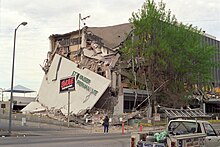
Damage and fatalities
Postado por
Fernando Martins
às
00:31
0
bocas
![]()
Marcadores: Califórnia, falha de Santo André, sismo, sismo de Northridge, sismologia
sexta-feira, janeiro 03, 2025
O navegador João Rodrigues Cabrilho morreu há 482 anos...
Postado por
Fernando Martins
às
00:48
0
bocas
![]()
Marcadores: Califórnia, descobrimentos, João Rodrigues Cabrilho, México
quinta-feira, outubro 17, 2024
O sismo de Loma Prieta foi há trinta e cinco anos...
Postado por
Fernando Martins
às
00:35
0
bocas
![]()
Marcadores: Califórnia, falha de Santo André, Loma Prieta, São Francisco, sismo, sismologia, USA
segunda-feira, maio 27, 2024
A ponte Golden Gate foi inaugurada há 87 anos
Postado por
Fernando Martins
às
08:07
0
bocas
![]()
Marcadores: Califórnia, Ponte Golden Gate, S. Francisco, USA
quinta-feira, maio 23, 2024
O Massacre de Isla Vista foi dez anos...
Rodger stabbed three men to death in his apartment, apparently one by one on their arrival. About three hours later, he drove to a sorority house and, after failing to get inside, shot three women outside, two of whom died. He next drove past a nearby deli and shot a male student inside to death. He then began to drive through Isla Vista, shooting and wounding several pedestrians from his car and striking several others with his car. He exchanged gunfire with police twice, and he was injured in the hip. After his car crashed into a parked vehicle, he was found dead inside with a self-inflicted gunshot wound to the head.
Before driving to the sorority house, Rodger uploaded a video to YouTube titled "Elliot Rodger's Retribution", in which he outlined his planned attack and his motives. He explained that he wanted to punish women for rejecting him, and sexually active men because he envied them. He also emailed a lengthy autobiographical manuscript to friends, his therapist and family members; the document appeared on the Internet and became widely known as his manifesto. In it, he described his childhood, family conflicts, frustration over his inability to find a girlfriend, his hatred of women, his contempt for couples (particularly interracial couples) and his plans for what he described as "retribution". In February 2020, the International Centre for Counter-Terrorism at the Hague retroactively described the killings as an act of misogynist terrorism. The US Secret Service describes it as "misogynistic extremism."
Postado por
Fernando Martins
às
00:10
0
bocas
![]()
Marcadores: Califórnia, Massacre de Isla Vista, USA
quinta-feira, abril 18, 2024
Há uma secção da falha de Santo André pronta a fazer estragos...
Sismólogos suspeitam que terramoto na falha de San Andreas está iminente
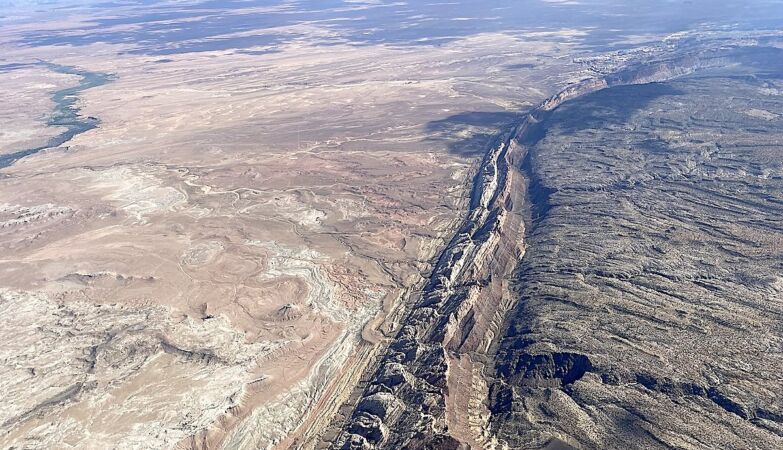
Falha de San Andreas, na Califórnia
Um novo estudo conduzido por sismólogos italianos e norte-americanos sugere que uma parte da Falha de San Andreas, em Parkfield, na Califórnia, não está a dar sinais que sugiram que um terramoto vai ocorrer em breve - mas afirmam que há fatores que sugerem o contrário.
Apesar de haver “parâmetros atenuantes invulgares”, os sismólogos Luca Malagnini, do Istituto Nazionale di Geofisica e Vulcanologia, em Itália, e Robert Nadeau e Tom Parsons, da Universidade da Califórnia, suspeitam que um terramoto na Falha de San Andreas pode estar iminente.
As suspeitas dos três sismólogos são apresentadas num artigo científico recentemente publicado na revista Frontiers in Earth Science.
A parte da Falha de San Andreas situada perto de Parkfield, na Califórnia, oferece aos cientistas que estudam os terramotos uma oportunidade única: a norte de Parkfield, duas grandes placas deslocam-se uma contra a outra a um ritmo constante. A sul de Parkfield, por outro lado, a falha está bloqueada.
Esta circunstância, explica o Phys, leva a que os terramotos ocorram com um padrão: aproximadamente a cada 22 anos, e permite aos investigadores recolher dados sísmicos antes, durante e depois de um terramoto.
Esses terramotos também têm quase sempre a mesma magnitude, cerca de 6 na Escala de Richter, ou ligeiramente superior.
O último terramoto que ocorreu no local foi em 2004, o que sugere que deverá ocorrer um terramoto nos próximos dois anos. Mas há um problema – a atividade sísmica relacionada com a falha não indica quaisquer sinais de um terramoto.
Normalmente, observam os autores do estudo, as ondas de baixa frequência atenuam-se antes de um terramoto, enquanto as ondas de alta frequência aumentam. Mas, neste momento, não há sinais de nenhum destes fenómenos.
Os investigadores salientam que o último terramoto que aconteceu na área ocorreu com um atraso com cerca de 14 anos de atraso.
Este atraso, no entanto, deveu-se essencialmente ao facto de outros sismos terem ocorrido suficientemente perto para aliviar a pressão sobre Parkfield - o que não é o caso desta vez.
Os três sismólogos acreditam que a pressão tectónica em zonas próximas da falha poder provocar brevemente um terramoto, mas com um epicentro algo deslocado.
Os investigadores não têm porém confiança absoluta nas suas leituras, pelo que optaram por não apresentar previsões formais. Em vez disso, sugerem que, como é sempre o caso com os terramotos, esperemos para ver o que acontece.
Felizmente, “esperar para ver o que acontece” não é neste caso um grande problema. Ao contrário da densamente povoada região de São Francisco, a cidade inquieta que está sempre à espera do “Big One”, quase ninguém vive em Parkfield.
in ZAP
Postado por
Fernando Martins
às
11:38
0
bocas
![]()
Marcadores: Califórnia, falha de Santo André, sismo, sismologia
quarta-feira, janeiro 17, 2024
O sismo de Northridge foi há trinta anos...

Damage and fatalities
Postado por
Fernando Martins
às
00:30
0
bocas
![]()
Marcadores: Califórnia, falha de Santo André, sismo, sismo de Northridge, sismologia, Us
quarta-feira, janeiro 03, 2024
João Rodrigues Cabrilho morreu há 481 anos...
Postado por
Fernando Martins
às
00:48
0
bocas
![]()
Marcadores: Califórnia, descobrimentos, João Rodrigues Cabrilho, México
terça-feira, outubro 17, 2023
O sismo de Loma Prieta foi há trinta e quatro anos...
Postado por
Fernando Martins
às
00:35
0
bocas
![]()
Marcadores: Califórnia, falha de Santo André, Loma Prieta, São Francisco, sismo, sismologia, USA
sábado, maio 27, 2023
A Golden Gate foi inaugurada há 86 anos
Postado por
Fernando Martins
às
08:06
0
bocas
![]()
Marcadores: Califórnia, Ponte Golden Gate, S. Francisco, USA
terça-feira, maio 23, 2023
O Massacre de Isla Vista foi nove anos...
Rodger stabbed three men to death in his apartment, apparently one by one on their arrival. About three hours later, he drove to a sorority house and, after failing to get inside, shot three women outside, two of whom died. He next drove past a nearby deli and shot a male student inside to death. He then began to drive through Isla Vista, shooting and wounding several pedestrians from his car and striking several others with his car. He exchanged gunfire with police twice, and he was injured in the hip. After his car crashed into a parked vehicle, he was found dead inside with a self-inflicted gunshot wound to the head.
Before driving to the sorority house, Rodger uploaded a video to YouTube titled "Elliot Rodger's Retribution", in which he outlined his planned attack and his motives. He explained that he wanted to punish women for rejecting him, and sexually active men because he envied them. He also emailed a lengthy autobiographical manuscript to friends, his therapist and family members; the document appeared on the Internet and became widely known as his manifesto. In it, he described his childhood, family conflicts, frustration over his inability to find a girlfriend, his hatred of women, his contempt for couples (particularly interracial couples) and his plans for what he described as "retribution". In February 2020, the International Centre for Counter-Terrorism at the Hague retroactively described the killings as an act of misogynist terrorism. The US Secret Service describes it as "misogynistic extremism."
in Wikipédia
Postado por
Fernando Martins
às
09:00
0
bocas
![]()
Marcadores: Califórnia, Massacre de Isla Vista, USA
terça-feira, janeiro 17, 2023
O sismo de Northridge foi há 29 anos...
Postado por
Fernando Martins
às
00:29
0
bocas
![]()
Marcadores: Califórnia, falha de Santo André, sismo, sismo de Northridge, sismologia, USA
terça-feira, janeiro 03, 2023
João Rodrigues Cabrilho morreu há 480 anos...
Postado por
Fernando Martins
às
00:48
0
bocas
![]()
Marcadores: Califórnia, descobrimentos, João Rodrigues Cabrilho, México
